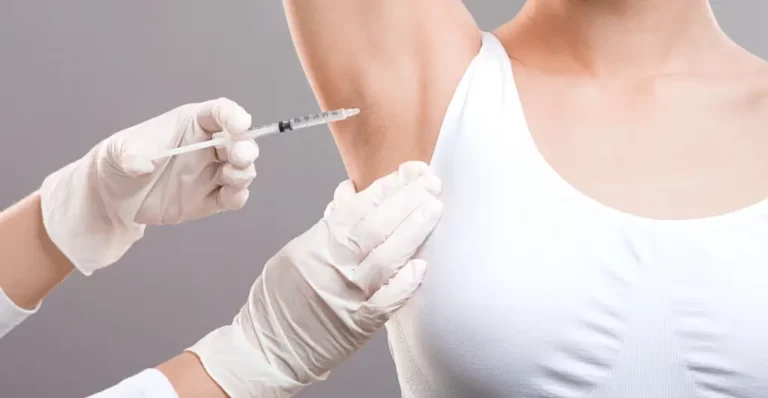ETS Surgery: A Risky Road to Sweating Relief
Endoscopic Thoracic Sympathectomy, or ETS surgery, is a medical procedure that has gained attention as a potential remedy for excessive sweating. Although it may sound like a promising solution for those dealing with the embarrassment and discomfort of constant perspiration, the path to relief through ETS surgery is paved with significant risks and concerning side effects. In this blog post, we’ll begin by exploring what ETS surgery entails and then delve into the often-overlooked consequences and complications that may accompany this drastic measure.
What is ETS Surgery?
ETS surgery is a surgical intervention primarily designed to treat hyperhidrosis, a condition characterized by uncontrollable and excessive sweating, often in the palms or feet. During the procedure, a surgeon accesses the sympathetic nerves that control sweat gland activity by making small incisions in the chest area. The goal is to disrupt these nerves, thereby reducing the body’s ability to produce sweat in the treated area. Although, ETS surgery is described as minimally invasive, it is far from an easy surgery. The patient is placed under general anesthesia, and the lungs are collapsed during the procedure. Due to the severe risks and side effects of ETS surgery, most providers are no longer recommending it to their patients.
The Perceived Benefits of ETS Surgery:
Proponents of ETS surgery point to the potential for immediate and lasting relief from the physical and social discomfort associated with hyperhidrosis. For individuals whose daily lives are hindered by persistent sweating, the allure of dry palms or feet may be compelling. However, it’s essential to weigh these perceived benefits against the significant risks and side effects:
- Irreversible Nerve Damage: One of the most alarming consequences of ETS surgery is the irreversible nerve damage it inflicts. While the procedure may provide relief in the targeted area, it permanently disrupts the sympathetic nerves. This may lead to a host of troubling issues, including compensatory sweating.
- Compensatory Sweating: Compensatory sweating is a common and often severe side effect of ETS surgery. When the body can no longer sweat in the treated area, it compensates by increasing sweat production in other regions. This may result in excessive sweating in unexpected and sometimes more problematic areas of the body such as the face, legs, back, chest or buttocks.
- Risk of Horner’s Syndrome: Although rare, Horner’s syndrome may develop as a result of ETS surgery. Horner’s Syndrome is a neurological disorder characterized by drooping eyelids, constricted pupils, and reduced sweating on one side of the face. This debilitating condition may profoundly impact an individual’s appearance and overall quality of life.
- Limited Reversibility: Once ETS surgery is performed, the nerve damage is permanent, leaving no room for reversal if complications arise or if patients regret their decision. The lack of reversibility may compound the stress and anxiety associated with post-surgical complications.
- Emotional and Psychological Impact: While the initial issue of excessive sweating may have caused emotional distress, dealing with the aftermath of ETS surgery, including compensatory sweating and other complications, may take a significant toll on someone’s emotional and psychological well-being.
Conclusion
ETS surgery may promise relief from the burdens of excessive sweating, but the potential risks and complications it carries are substantial. The irreversible nerve damage, compensatory sweating, risk of Horner’s syndrome, and other possible side effects should give anyone contemplating this procedure pause for thought.
Before committing to ETS surgery, it’s vital to explore less invasive treatments, lifestyle adjustments, and alternative medical options. Consultation with a healthcare professional is critical to thoroughly understand the potential consequences and weigh them against the perceived benefits. In making an informed decision tailored to your specific situation, you may avoid the pitfalls that often accompany the pursuit of a sweat-free life through ETS surgery.
miraDry is a non-surgical, permanent solution to underarm sweat, odor and hair. In three steps, miraDry targets and destroys excessive sweat at its root. If you are interested in learning more or getting treated by miraDry, please visit our provider locator page to find a location near you! https://providers.miradry.com/
Disclaimer: The information included in this blog is for educational purposes only and is not intended to be a substitute for medical treatment by a healthcare professional.
References:
International Hyperhidrosis Society (2001). Endoscopic thoracic sympathectomy (ETS). https://sweathelp.org/hyperhidrosis-treatments/ets-surgery.html
Vannucci, F., & Araújo, J. A. (2017). Thoracic sympathectomy for hyperhidrosis: from surgical indications to clinical results. Journal of Thoracic Disease, 9(S3), S178–S192. https://doi.org/10.21037/jtd.2017.04.04










